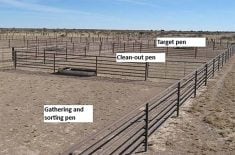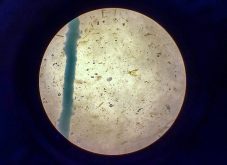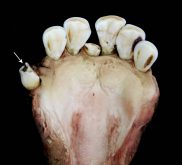Access to export or niche markets may be denied if painkillers are not administered
SASKATOON — An Iowa State university professor continues to explore whether there are economic and production benefits to using painkillers on beef cattle before dehorning and castration.
Hans Coetzee summarized his research at the International Symposium for Beef Cattle Welfare last month. He has found reduced incidence of bovine respiratory disease in recently castrated beef cattle, but other production benefits have yet to be proven.
“If producers are going to be expected to pay for analgesia (painkillers) at the time of dehorning and castration, it is reasonable for them to ask, ‘what’s in it for me?’ ” he said.
Read Also

Trump’s tariffs take their toll on U.S. producers
U.S. farmers say Trump’s tariffs have been devastating for growers in that country.
However, Coetzee said animal health and performance benefits are only two aspects of using painkillers in food animals. He outlined three others:.
- providing painkillers may become the cost of doing business to maintain export and domestic markets
- their use may provide market access for beef to niche markets that require painkillers to be ad-ministered
- use of painkillers may be necessary to maintain consumer confidence in beef production practices
As well, he said the public believes painkiller use is the right thing to do in food animals and should be used in the same way they are used for pets.
He said people are often surprised to learn that painkillers aren’t used routinely before or after castration, and the realization can lead to lower confidence in food animal production.
“This is probably something we need to address,” he said. “I think this is an area where we need to develop a really good offence that has something to do with analgesia.”
Veterinarians are looked upon as custodians of animal welfare, yet only one in five American vets routinely uses analgesics for castration, he added.
“We have a significant credibility problem if that continues to be the case.”
Coetzee said eight million calves are castrated in the United States each year, and a 2008 study indicated 41 percent of producers do not castrate their bulls before sale. One in five do not castrate until the animal is more than 122 days old.
Minimal use of painkillers in the U.S. is related to a shortage of approved injectable analgesics, he said.
In Canada, a drug called meloxicam is approved as an injectable, with a 20 day withdrawal time.
In one U.S. study, Coetzee said cattle treated with meloxicam before dehorning showed higher average daily gains than a control group in the 10 days after the procedure.
However, the study did not extend to see whether the control group caught up to the treated group in the subsequent feeding period.
Another study used oral meloxicam on animals before castration upon arrival at the feedlot. Coetzee said researchers found no effect on performance, but fewer of the treated animals were pulled from the pens for treatment of BVD.
Animals in the study were castrated at an older age than is commonly done, he said, so more research is needed to draw accurate conclusions.















